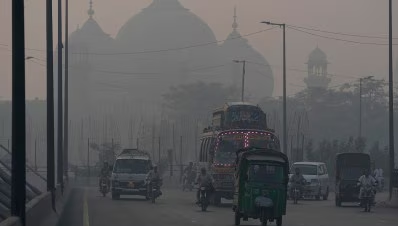Scientists have reported that healthy people emit exponentially more aerosol particles from their lungs as they age, both at rest and during exercise.
Older studies had shown that the amount of aerosol particles that people of all ages emitted increased by more than 100-fold from rest to intense exercise. But they investigated the effect of factors such as age, sex, and body mass index only at rest and without considering ventilation.
In an aerosol, very fine solid or liquid particles are suspended in a fluid. For example, air that contains PM2.5 particulate matter can be considered an aerosol.
The new study, published in the Proceedings of the National Academy of Sciences on May 22, 2023, was conducted by a team led by Henning Wackerhage, a professor of exercise biology at the Technical University of Munich, and Christian Kähler, director of the Institute of Fluid Mechanics and Aerodynamics at the University der Bundeswehr (UniBw), Munich.
How was the study designed?
The researchers split the study’s 80 participants into groups based on their ages. Then, they studied air samples that the people in each group exhaled as they performed physical exercises that took them to exhaustion.
They developed an apparatus that first filtered out aerosols in the ambient air, the air the participants breathed. Then, the participants inhaled the purified air through a mask that covered the mouth and the nose.
Next, the intensity of their exercise increased gradually. The masks that the participants wore were connected to a valve through which only the air they exhaled could escape.
The researchers then measured the performance of healthy participants and directly linked that to the quantity of aerosol particles the participants emitted per minute.
What did the study find?
The team found that older people, aged 60-70 years, emitted twice as many aerosol particles and five-times as much dry volume i.e., the volume of dried aerosol particles, as those aged 20-39, both at rest and during exercise.
They also found that a small fraction of air that they had sampled had a higher concentration of aerosol particles from both old and young people at rest than when they were exercising.
During exercise, both older and younger people had particles of size 0.4 µm, but the older people also had a significant number of particles larger than 0.4 µm.
Similarly, the air exhaled by older people was thrice as dense with respiratory aerosol particles as that exhaled by younger people. The samples from elderly women were also 137% more concentrated than those of elderly men.
There were no significant differences in aerosol particle concentration and emission based on body-fat percentages.
What are the implications?
In the early days of the COVID-19 pandemic, there was considerable debate over whether aerosols helped the virus move through the air. The new findings suggest disease-transmission models may have to account differently for younger and older people.
Higher aerosol emissions by older people “could potentially correlate with a higher infection risk for others when an older infected person is present compared to a younger infected person,” Benedikt Schumm, a member of the study and a professor of fluid mechanics and aerodynamics at UniBw, said in an email to The Hindu.
The study’s paper stated that the results were only from healthy people and didn’t include those with respiratory diseases or acute respiratory illness. “This might be relevant,” the paper continued, “as aerosol particle concentrations can increase in infected individuals presumably because a respiratory infection alters the properties and function of peripheral airways that determine aerosol particle production.”
“We started our research project due to the COVID-19 pandemic as an interdisciplinary group of aerodynamic, fluid dynamic engineers and sport scientists,” Dr. Schumm said. “In this paper we investigated the easy to assess parameters age, sex, and BMI. Out of these, only age had a significant effect on aerosol particle emission.”
The author is an intern at The Hindu.
month
Please support quality journalism.
Please support quality journalism.










